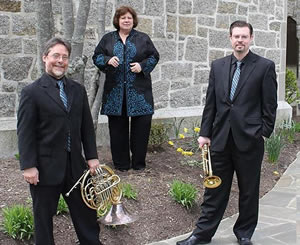After a year and a half of performances without live audiences, the time was ripe for a spectacular bash of the kind we have come to expect from the talented mix of artists and technicians that constitute the student body as well as the faculty of the prestigious University of North Carolina School of the Arts (UNCSA) located in Winston-Salem, NC. Although the main act was the 95-member student symphony orchestra on stage, under the direction of guest conductor Robert Franz (himself an alumnus of UNCSA), the audience was also a large part of the show – countless bare-shouldered ballerinas and prima donnas, costumes, flashy clothes and spectacular hair brought the celebration into the packed Stevens Center.
After a brief description of the program’s connections, the maestro opened the concert with an interesting unknown work by the Polish female composer Grażyna Bacewicz (gra-ZHEE-na ba-TSAY-vich, 1909-1969), lasting only about five minutes. The driving rhythm reminded me of the sense of perpetual motion in Bela Bartok’s closing movement of his Concerto for Orchestra. In a fast-slow-fast schema, all in two beats to the measure, a rising whole-tone scale signals the approaching conclusion to this brilliant Overture (Uwertura). Hopefully we will hear more of this outstanding composer!
The Concierto de Aranjuez by the blind Spanish composer Joaquín Rodrigo (1901-1999) is surely the most popular guitar concerto in the repertory, and despite being a difficult concerto to play, it can be heard frequently. The rhythms of both outer movements are catchy and the sublime melancholy melody of the middle Largo movement is so popular that the publisher of the parts does not allow it to be played by itself, but only in the context of a complete performance.
The outstanding soloist for this performance was the winner of the 2021 UNCSA Concerto Competition, Harry Conn Ngô, a college senior originally from Vietnam. Sporting a “man bun” and elegantly clad in a black velvet tuxedo with satin lapels, a black mask and deep purple slacks, his playing was sensational. He played the outer movements with brilliance, notably the quick shifts of position that end the first movement, and all at a speedy tempo that verged on risky, but proved breathtaking. The slow movement was voluptuous and sensuous, the melody passed back and forth from English horn (exquisitely played by Kayla Bull) to guitar and a lovely cello solo (Sophie Lyman). Maestro Franz was very attentive, never rushing the end of the phrases and letting the guitar sing. Although he tried to forestall applause between movements, he was thwarted by the overt enthusiasm of the audience until the last movement of the symphony, an hour later!
There is no doubt that the Fifth Symphony of Dimitri Shostakovich (1906-1975) is one of the masterpieces of the twentieth century. Written in 1937, a time of rampant Stalinism with purges and executions carried out summarily, the Fifth Symphony was Shostakovich’s reply to Stalin’s condemnation of his opera, Lady MacBeth of the Mtsensk District, and similar critiques of his Fourth Symphony. The anguish of the first movement of the Symphony No. 5, first exposed as a jagged canon between high and low strings, sets the entire tone of the first movement.
This was a masterful performance, directed by Robert Franz’s masterful hand. Especially touching were the quietest string moments where the flute (Jaron Deming) and horn (Logan Fischer) played in canon near the end of the first movement over the reiteration of an obstinate dactylic rhythm (long, short-short).
The second movement, a scherzo marked “Allegretto,” was comic and a welcome change from the taut line of tension of the first movement. Especially well played were the slightly tipsy trio (by concertmaster Luca Kevorkian) and the coda (by oboist Kaylin McClafferty). The balance of bassoons and contrabassoon at the recapitulation of the scherzo theme was perfectly gauged.
Perhaps one of the most beautifully written movements of the last century is the third movement of Shostakovich’s Fifth Symphony. Marked simply as “Largo,” it divides the totality of violins (usually divided into two sections: first violins and second violins) into three equal groups each with an independent part. The string writing is superb and the effect is sublime. When the composer aims for the passionate climax of the movement, the orchestration includes xylophone doubling the highest violin and then the double basses (all 11 of them!) playing only the attack of each changing note with a swift chopping motion – superb orchestration! The denouement (untying the knot) of this climax features a simple chromatic scale, delicately played by celesta and harp, doubling each other.
The symphony finale concludes after a lengthy acceleration recalls of the dactylic rhythm of the first movement, moving into a triumphant brass call over the entire string section playing repeated eighth notes. Thus, triumph over anguish gives renewed hope. The performance provoked an immediate and lengthy standing ovation!
This concert had originally been scheduled to be conducted by the recently appointed Music Director of the Winston-Salem Symphony, Timothy Redmond. However, Redmond has recently resigned from the W-S Symphony, citing extended travel times between the United Kingdom (his home) and North Carolina.
In view of this sudden vacancy, one would hope that the W-S Symphony Board of Directors would reconsider Maestro Franz, particularly in view of his outstanding performance not only at UNCSA on Saturday night, but also his excellent performance during the W-S Symphony search two years ago. (See my review of January 6, 2019.)
Note: In the interest of transparency and full disclosure, this reviewer was the music director of the W-S Symphony during the time Franz was employed as Assistant Conductor and Director of Education Activities.











